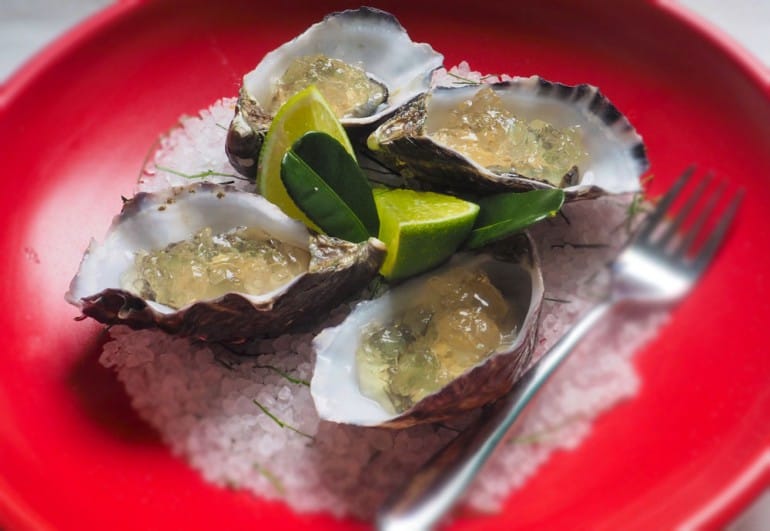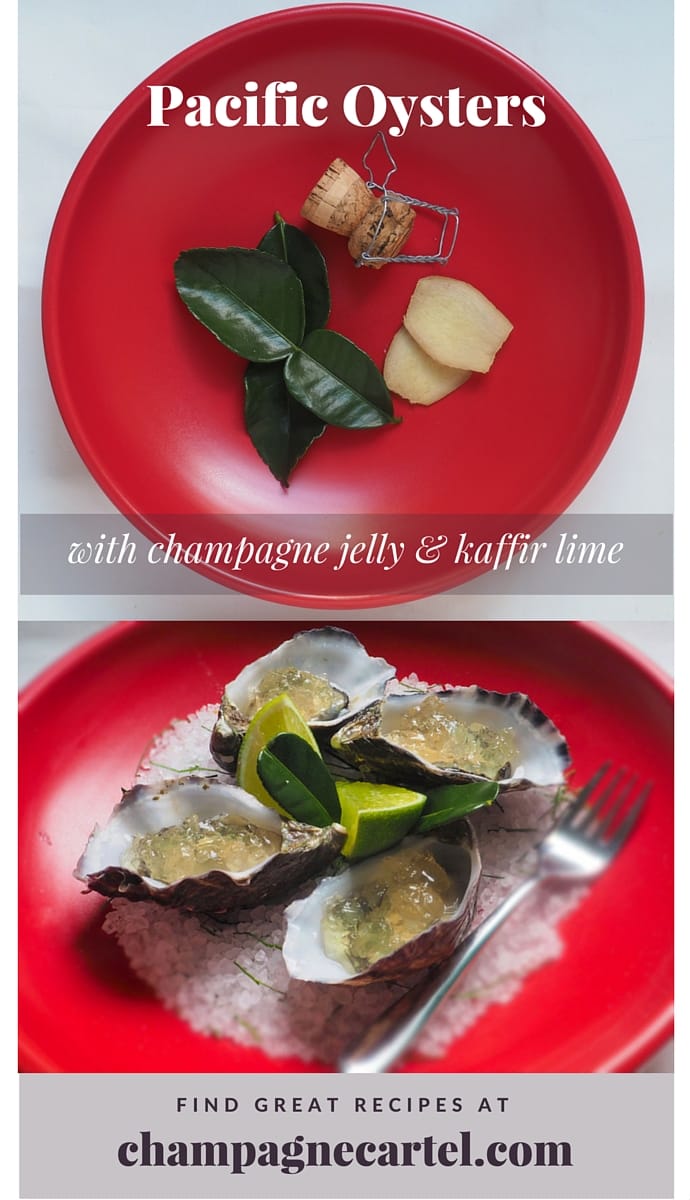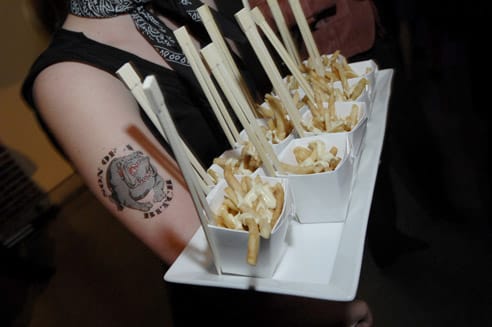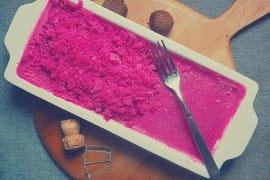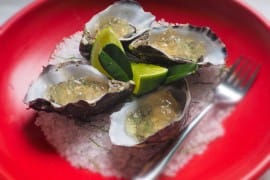This really is a celebration dish. And we are after all, celebrating the release of a great new venture in Champagne Cartel. The decadence of champagne and oysters brought together for a great summer dish.
Pacific Oysters with Champagne Jelly and Kaffir Lime
Ingredients
- 2 dozen oysters – Pacific or pristine rock oysters. Opened on the day you intend to eat them preferably.
- 250ml of your favourite sparkles, plus extra to accompany of course.
- 3 leaves or 1.5 teaspoons powdered gelatine
- 4 kaffir lime leaves – crushed and torn to release the incredible aroma.
- 1 small piece of ginger – cut into matchsticks
Method
- If using leaf gelatine, soak the gelatine in warm water until soft (the texture of a used franger is one description that gets bandied around).
- Warm half the champagne with the lime leaves and ginger in a small saucepan and let sit for 5 minutes.
- Stir in the gelatine until dissolved and add the remaining sparkles. Set for at least 4 hours in the fridge in a flat tray lined with cling film.
- When it’s set, turn the jelly out onto a chopping board and chop roughly. Place a small scoop onto each of your chilled oysters.
- To serve, finely slice some extra lime leaf and toss it through some rock salt. Serve the oysters on top. The salt helps to keep the oysters upright so the jelly won’t fall out. The sliced lime leaf will emit a wonderful aroma, adding the whole experience.
Hot oyster tip
I would choose a Pacific oyster or a pristine rock oyster over say, a Sydney rock, for this dish because they tend towards a muddy, metallic aftertaste. Some prefer this; me, not so much. Oysters are one of the best examples of food directly reflecting its environment. Temperature plays a major part also, in the reproductive cycle.
Did you know…
- It takes at least two years for an oyster to grow to maturity, more often three to four.
- Oysters like the cold. If your oyster is soft and creamy it is in a spawning cycle (they generally spawn during the warmer months). Plump and firm is what you’re after.
- Pacific oysters aren’t necessarily grown in the Pacific Ocean. The name refers to the type of oyster. In fact, a great majority of the oysters we buy in Australia are from South Australia or the southern bays and inlets of Tasmania. Conversely, rock oysters grow everywhere, not just Sydney. The best ones I’ve tasted came from Stradbroke Island. Queenslander!!
- Size is no indicator of quality. Right ladies?
- Champagne makes the world a better place. Fact!
Are you an oyster fan? Will you give this a go?



